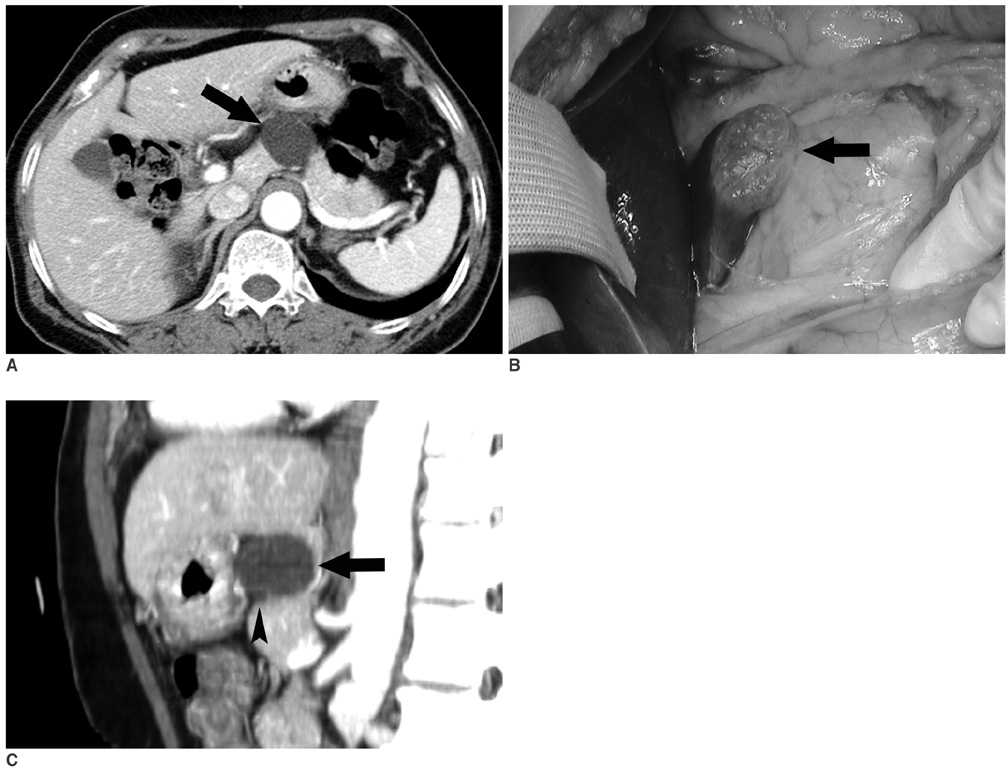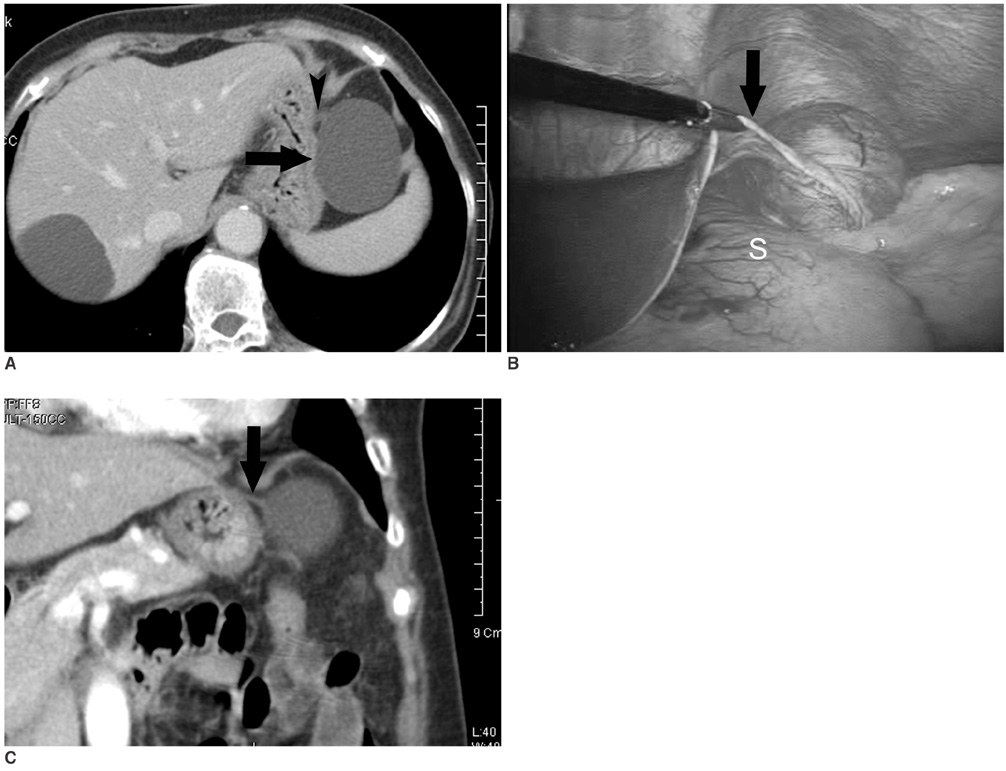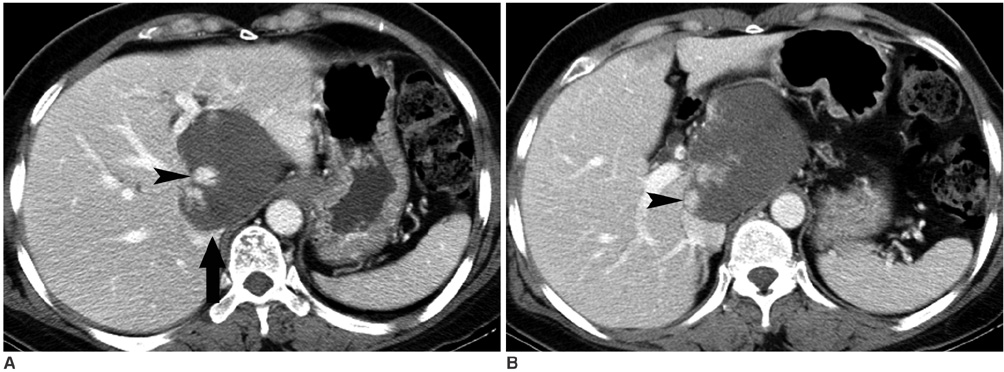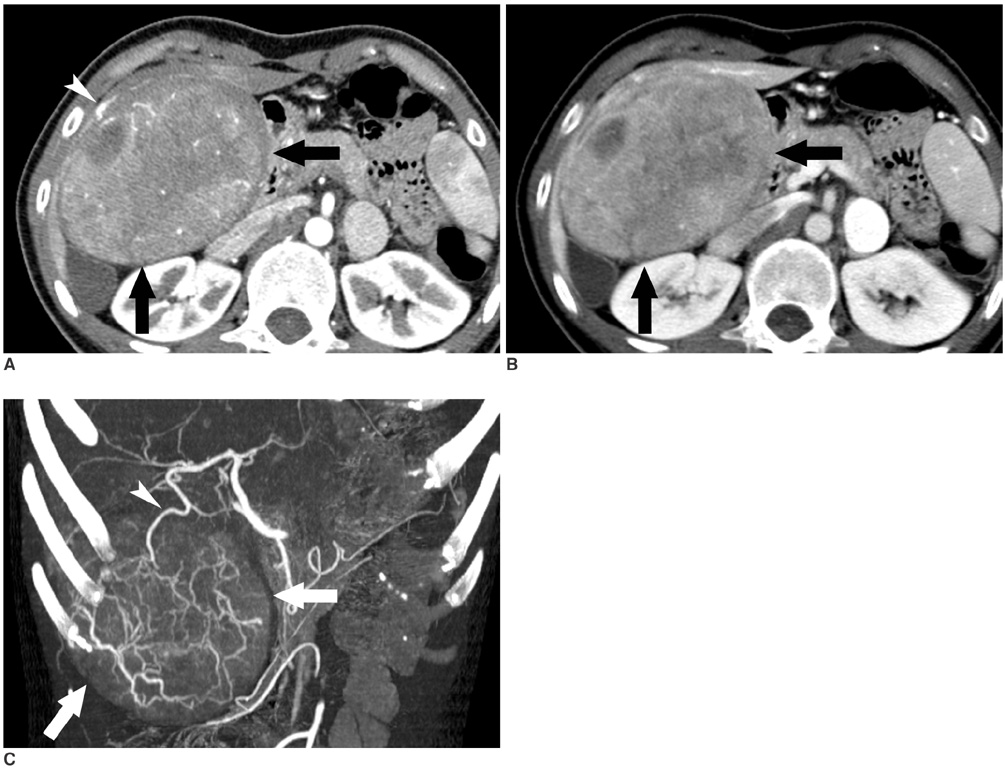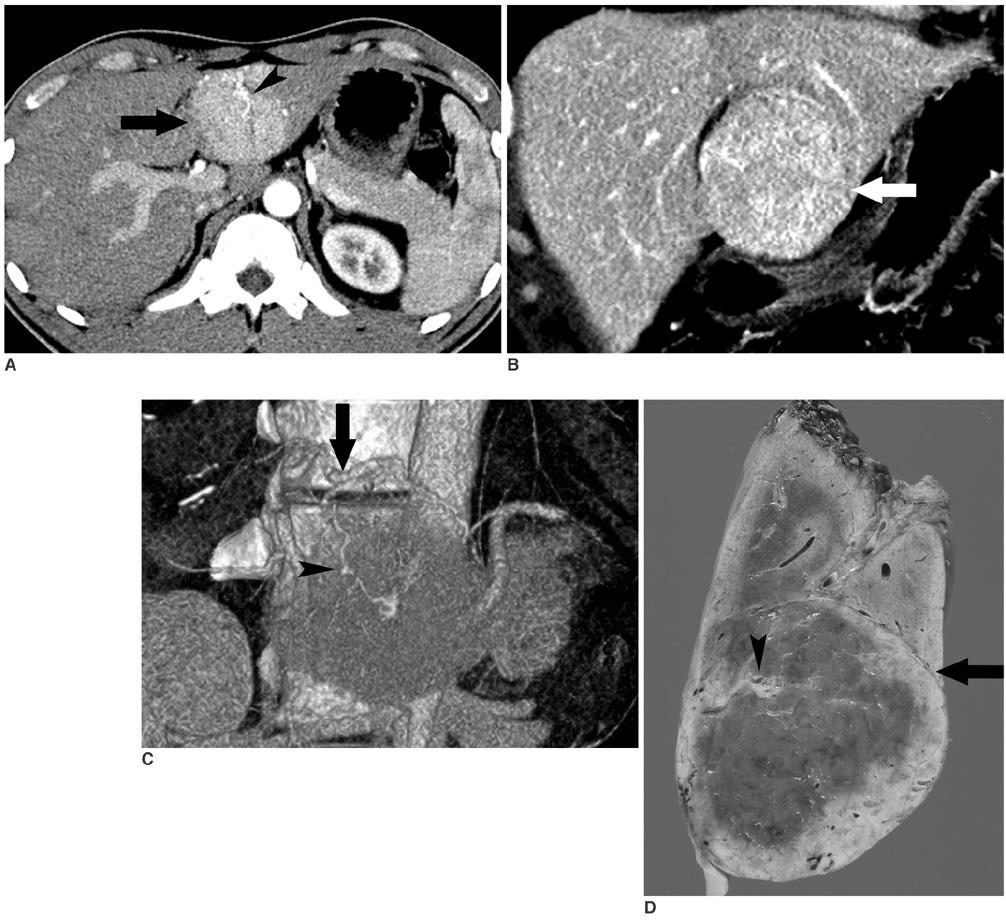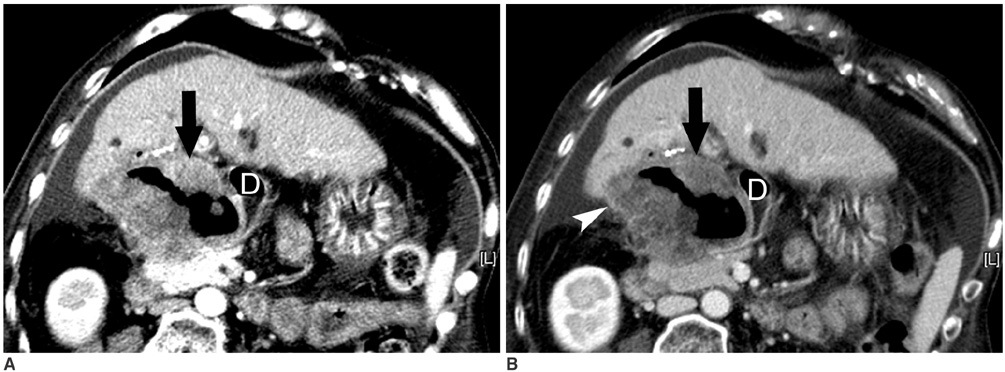Korean J Radiol.
2008 Feb;9(1):67-75. 10.3348/kjr.2008.9.1.67.
Exophytic Benign and Malignant Hepatic Tumors: CT Imaging Features
- Affiliations
-
- 1Department of Radiology, Kyung Hee University Medical Center, Seoul, Korea. radhjkim@khu.ac.kr
- 2Department of Radiology, University of Ulsan College of Medicine and Asan Medical Center, Seoul, Korea.
- KMID: 1734277
- DOI: http://doi.org/10.3348/kjr.2008.9.1.67
Abstract
- Our objective is to describe the CT features of exophytic hepatic tumors those may pose a diagnostic challenge because of the uncertainty of tumor origin. The beak sign and the feeding artery of a tumor are useful diagnostic indicators of exophytic hepatic tumors. Two- or three-dimensional reformation images are also helpful for diagnosis. The CT features of exophytic hepatic tumors are similar to those of the usual intrahepatic tumors except for their location.
Keyword
MeSH Terms
Figure
Cited by 1 articles
-
Giant pedunculated hepatocellular carcinoma masquerading as a pelvic mass: a case report
Hae Il Jung
Korean J Hepatobiliary Pancreat Surg. 2014;18(2):56-59. doi: 10.14701/kjhbps.2014.18.2.56.
Reference
-
1. Bader TR, Braga L, Semelka RC. Exophytic benign tumors of the liver: appearance on MRI. Magn Reson Imaging. 2001. 19:623–628.2. Nishino M, Hayakawa K, Minami M, Yamamoto A, Ueda H, Takasu K. Primary retroperitoneal neoplasms: CT and MR imaging findings with anatomic and pathologic diagnostic clues. Radiographics. 2003. 23:45–57.3. Murphy BJ, Casillas J, Ros PR, Morillo G, Albores-Saavedra J, Rolfes DB. The CT appearance of cystic masses of the liver. Radiographics. 1989. 9:307–322.4. Quinn SF, Benjamin GG. Hepatic cavernous hemangiomas: simple diagnostic sign with dynamic bolus CT. Radiology. 1992. 182:545–548.5. Brancatelli G, Federle MP, Blachar A, Grazioli L. Hemangioma in the cirrhotic liver: diagnosis and natural history. Radiology. 2001. 219:69–74.6. Vilgrain V, Boulos L, Vullierme MP, Denys A, Terris B, Menu Y. Imaging of atypical hemangiomas of the liver with pathologic correlation. Radiographics. 2000. 20:379–397.7. Brancatelli G, Federle MP, Vullierme MP, Lagalla R, Midiri M, Vilgrain V. CT and MR imaging evaluation of hepatic adenoma. J Comput Assist Tomogr. 2006. 30:745–750.8. Ichikawa T, Federle MP, Grazioli L, Nalesnik M. Hepatocellular adenoma: multiphasic CT and histopathologic findings in 25 patients. Radiology. 2000. 214:861–868.9. Goldstein HM, Neiman HL, Mena E, Bookstein JJ, Appelman HD. Angiographic findings in benign liver cell tumors. Radiology. 1974. 110:339–343.10. Brancatelli G, Federle MP, Grazioli L, Blachar A, Peterson MS, Thaete L. Focal nodular hyperplasia: CT findings with emphasis on multiphasic helical CT in 78 patients. Radiology. 2001. 219:61–68.11. Akatsu T, Sakamoto M, Shimazu M, Kitajima M. Pedunculated angiomyolipoma of the liver with a predominant pelioid pattern. Virchows Arch. 2004. 444:467–469.12. Bret PM, Bretagnolle M, Gaillard D, Plauchu H, Labadie M, Lapray JF, et al. Small, asymptomatic angiomyolipomas of the kidney. Radiology. 1985. 154:7–10.13. Valls C, Iannacconne R, Alba E, Murakami T, Hori M, Passariello R, et al. Fat in the liver: diagnosis and characterization. Eur Radiol. 2006. 16:2292–2308.14. Yeh CN, Lee WC, Jeng LB, Chen MF. Pedunculated hepatocellular carcinoma: clinicopathologic study of 18 surgically resected cases. World J Surg. 2002. 26:1133–1138.15. Horie Y, Katoh S, Yoshida H, Imaoka T, Suou T, Hirayama C. Pedunculated hepatocellular carcinoma. Report of three cases and review of literature. Cancer. 1983. 51:746–775.16. Kim KW, Auh YH, Chi HS, Lee SI. CT of retroperitoneal extension of hepatoma mimicking adrenal tumor. J Comput Assist Tomogr. 1993. 17:599–602.17. Jung AY, Lee JM, Choi SH, Kim SH, Lee JY, Kim SW, et al. CT features of an intraductal polypoid mass: differentiation between hepatocellular carcinoma with bile duct tumor invasion and intraductal papillary cholangiocarcinoma. J Comput Assist Tomogr. 2006. 30:173–181.18. Ros PR, Buck JL, Goodman ZD, Ros AM, Olmsted WW. Intrahepatic cholangiocarcinoma: radiologic-pathologic correlation. Radiology. 1988. 167:689–693.19. Valls C, Guma A, Puig I, Sanchez A, Andia E, Serrano T, et al. Intrahepatic peripheral cholangiocarcinoma: CT evaluation. Abdom Imaging. 2000. 25:490–496.
- Full Text Links
- Actions
-
Cited
- CITED
-
- Close
- Share
- Similar articles
-
- Hepatocellular Adenoma and Focal Nodular Hyperplasia
- Penetration of Hepatic Veins Through the Hepatic Neoplasms : Report of Three Cases
- MRI Findings and Differential Diagnosis of Benign and Malignant Tumors of the Uterine Corpus
- Vascular tumors of the liver: A brief review
- Solitary Pulmonary Nodule: CT Findings

